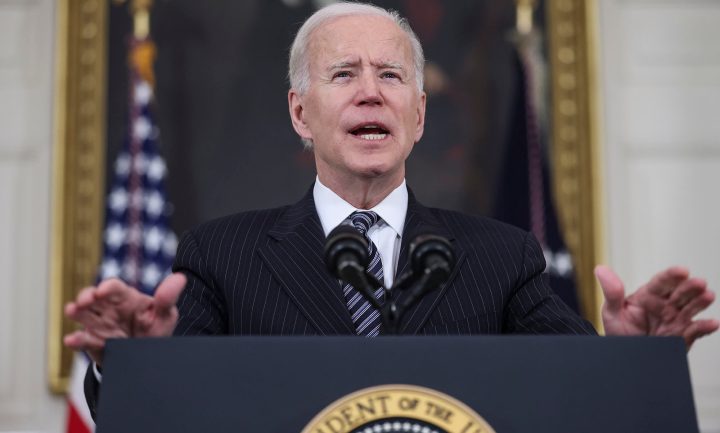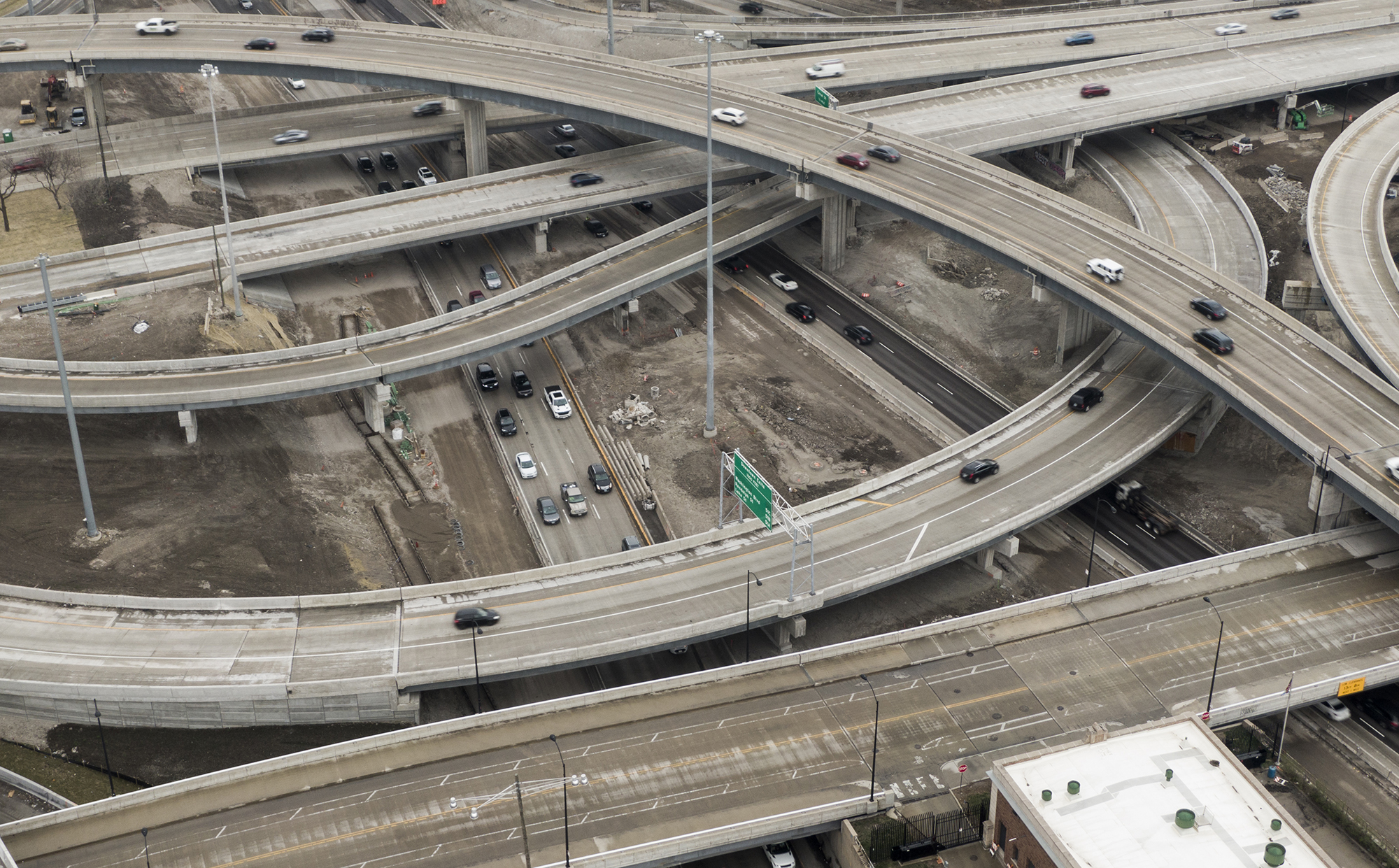DM168 Analysis
United States: Going back to the future with President Biden’s big infrastructure plan

In the United States, the new stimulus package squeaked to victory. What about the next plan? It will be a real battle for the administration to get the new infrastructure plan passed by a Congress almost evenly split between Republicans and Democrats.
First published in the Daily Maverick 168 weekly newspaper.
The politics behind the Biden administration’s new infrastructure plan, despite Republican complaints, actually has deep roots in American history and the economy. But it will be a real battle for the administration to get it passed by a Congress almost evenly split between Republicans and Democrats.
The Biden administration seems to be riding high on its legislative success, despite paper-thin margins in both houses of Congress. In the Senate, the Democrats and Republicans each have 50 senators, with Vice-President Kamala Harris as the tie-breaking vote. In the lower chamber, the House of Representatives, the Democrats have a small margin, but in this highly politicised environment, holding almost every single one of its members’ votes for any legislative proposal such as the new infrastructure package will be crucial.
Nonetheless, in the Biden administration’s first big legislative fight — the enormous stimulus package — they squeaked to victory. Many millions of Americans are now receiving the resulting direct stimulus cheques of $1,400, among many other disbursements across the country.
In fact, although Republican legislators are opposed to the Biden agenda, at least so far, looking to the longer term, the president is betting the country as a whole is supportive of these measures. At least in part, the strategy is that in the 2022 midterm election, the Democrats will be able to paint Republicans as opposed to the legislation the country wants and needs.
Republicans obviously hope they can rally opposition to these proposed infrastructure measures on grounds of cost, or that they somehow traduce the societal and economic values that voters leaning towards the GOP say they espouse. Republican parlance is increasingly (mis)labelling Biden administration plans as exemplars of dangerous, radical socialism. Notwithstanding such positions, public opinion polls similarly say a majority of the nation supports this set of proposals as well.
Next up for Congress is the second vast presidential proposal, popularly referred to as Biden’s infrastructure plan. This plan is already – unsurprisingly – being derided by Republican legislators as (no points for guessing on this one) radical socialism.
Moreover, the proposed financing mechanisms are being assailed as radical, far left, soak-the-rich, tax-and-spend measures. The mechanism actually represents a distinctly modest increase in the marginal corporate tax rate to levels that are still below those in effect before the previous administration’s great tax bonanza for the rich. It would also put in place a similarly modest increase in personal income taxes for individuals earning more than $400,000 (R5,811,220). This, in turn, is nowhere close to the highest marginal rate on personal incomes that prevailed throughout most of the post-World War 2 years.
Despite increasingly histrionic Republican rhetoric, the Biden infrastructure proposal is very much in line with the broad sweep of American governmental policy –right from the beginning of the nation. Alexander Hamilton, the nation’s first secretary of the treasury and the man central to stabilising the new government’s finances, had proposed similar things back in 1791.
In his Report on Manufactures, Hamilton wrote: “There is no purpose, to which public money can be more beneficially applied, than to the acquisition of a new and useful branch of industry; no Consideration more valuable than a permanent addition to the general stock of productive labour.”
He added: “It is a truth as important as it is agreeable, and one to which it is not easy to imagine exceptions, that everything tending to establish substantial and permanent order, in the affairs of a Country, to increase the total mass of industry and opulence, is ultimately beneficial to every part of it,” and that “… there is no truth, which may be more firmly relied upon, than that the interests of the revenue are promoted, by whatever promotes an increase of National industry and wealth”.

The US Interstate 90, also known as the Dan Ryan Expressway, under reconstruction in Chicago, Illinois, on 5 April 2021. (Photo: EPA-EFE / TANNEN MAURY)
Although Hamilton’s specific proposals were not immediately adopted, by the second decade of the 19th century, there was growing national agreement that such “national improvements” were crucial for the economic and social benefit of the nation. One early example of this (albeit New York state-financed) was the Erie Canal, connecting the Hudson River and the port of New York City with the Great Lakes basin and the midwestern states adjacent to it to export their produce. The government commitment to such an engineering effort proved the model for later government interventions.
Washington Post columnist David Von Drehle, in line with the Hamiltonian vision, wrote: “I’ve learned from experience what DeWitt Clinton, who later became governor of New York, knew as far back as 1810, when he began years of labor on a project widely derided as ‘Clinton’s Folly’, that eventually became known as the Erie Canal. Infrastructure is the connective tissue for human cooperation and communication. Bridges, roads, seaports, airports, railways, waterways, power lines, broadband – they all end up paying for themselves many times over because they leverage the greatest economic resource on earth: people.”
Transcontinental railroads and the land grant colleges and universities were major nationally financed initiatives. The former were developed by the national government to build communication and transportation across the nation for people and goods, and the latter provided for low-cost, high-quality, popular education in agronomy and engineering. Both were funded by grants of as-yet-unsettled land to the railroad companies or to the states so they could sell that land to fund the construction of the rail lines and universities.
Thereafter, other major federal government construction projects included the Panama Canal, the interstate highway system, the Tennessee Valley Authority (TVA), and the St Lawrence Seaway, among many others. These were not largely Democratic Party initiatives. Many came during the Republican administrations of Abraham Lincoln, Theodore Roosevelt and Dwight Eisenhower, who saw the national interest in large, federally managed and financed efforts. The Biden plan falls squarely within the historical trajectory of federal government infrastructure projects. Hamilton would have been pleased.
As economist Paul Krugman explained in The New York Times: “The Biden administration infrastructure fact sheet alludes to part of that history, declaring that the plan ‘will invest in America in a way we have not invested since we built the interstate highways and won the space race.’ Indeed, one way to think about the Biden programme is that it’s … a partial return to the Eisenhower era, when we had much higher government investment as a share of gross domestic product than we do now, and also much higher tax rates on both high-income individuals and corporations.”
In short, Hamilton’s ideas put into action. The Eisenhower administration pushed the highway system forward in a bipartisan manner, citing the need for high-speed, limited-access highways in sync with national defence capabilities. The Roosevelt administration had constructed the TVA to provide reliable electric power to a vast section of the southeastern US previously poorly supplied by a jumble of private power companies, and also to limit the regular rampages of floods by controlling river flows through an extensive system of dams. (And it didn’t hurt Democratic Party support across the South for at least another generation.)

US President Joe Biden has proposed a $2.25 trillion bill to create jobs, upgrade highways and bridges, and protect the environment. (Photo: EPA-EFE / TANNEN MAURY)
The Biden infrastructure plan does vary somewhat from what people routinely think of as infrastructure. There is funding for bridge repair and replacement, desperately needed upgrades for airports and harbours, and support for more rapid rail, but there will also be funds for reliable national broadband coverage, support for early childhood education, and charging stations to encourage much wider investment in electric vehicles, among other projects.
A key element would be to ensure spending targets historically poorer, economically and socially disadvantaged communities – similar to the impetus behind the TVA, as with many other New Deal programmes.
In fact, there is also some geopolitical fervour in the Biden infrastructure plan. As the president himself explained, the core competition of the 21st century is going to be between the US and China – that is, whether or not a rowdy but creative democratic society can be at least as focused, innovative, and successful with the new technologies as the authoritarian, state-guided capitalism model of China will be.
In this way, this infrastructure plan is a loose-limbed version of developmental state, industrial policy to boost the winning technologies, but without picking individual winners and losers among the companies in each sector. While Republican critics (and some others) recoil at the very idea of industrial policy and the developmental state, throughout the Cold War, that is significantly what the US government did in the service of creating a high-tech defence establishment that outperformed its Russian rivals.
The White House’s description of the plan, dubbed the American Jobs Plan, says it this way: “While the American Rescue Plan is changing the course of the pandemic and delivering relief for working families, this is no time to build back to the way things were. This is the moment to reimagine and rebuild a new economy. The American Jobs Plan is an investment in America that will create millions of good jobs, rebuild our country’s infrastructure, and position the United States to out-compete China. Public domestic investment as a share of the economy has fallen by more than 40 percent since the 1960s. The American Jobs Plan will invest in America in a way we have not invested since we built the interstate highways and won the Space Race.”
The Biden plan is a wager that much the same thing can happen in the growing rivalry between China and America. But to get it passed in Congress despite the recalcitrant Republican legislators, the Biden administration must make the convincing case this infrastructure plan – and the political assumptions in it about democratic versus authoritarian values – will provide the sinews, tissues and bones to catapult the US back into a sustained lead over its rival in future. Or will acerbic Chinese criticism of America as over the hill and in decline come true instead, despite this Biden bet? DM168
This story first appeared in our weekly Daily Maverick 168 newspaper which is available for free to Pick n Pay Smart Shoppers at these Pick n Pay stores.




















 Become an Insider
Become an Insider
About time SA also invested in reliable infrastructure in a proper manner, using experienced professional engineers to manage it. Not the deployed cadres who have no background or experience to efficiently and effectively manage the system.
You think that will happen here ?
Where are the new universities /hospitals , the million houses for Alex ?
The plan targets low income families , hopefully to be new voters .
Just by saying $$ are available , who will qualify and how ? Who knows ?
Tenderpreneurs are not limited to SA !
We know whose side the writer takes 🙂
Who does not want $1400 in their pocket , eg SASSA here , patronage .
The picture has nothing to do with the Bill !
Infrastructure takes on an whole new meaning .
All of 6 % will actually go to bridges etc .
Over a 3-4 year period